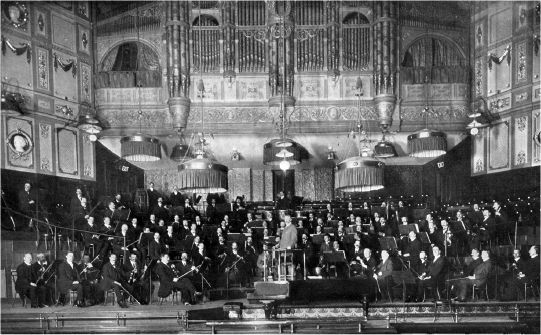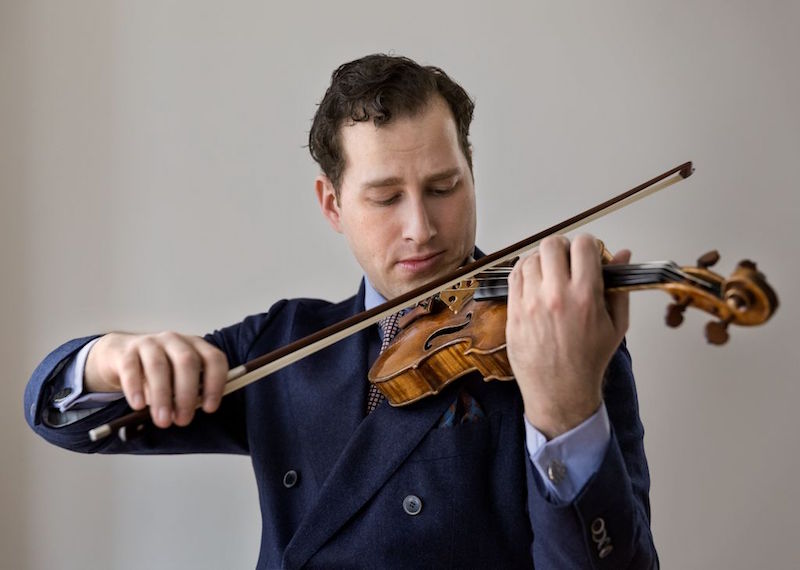Anger and fear in Elgar, introspection in middle-period Beethoven: these are undervalued qualities in each composer’s music. Yet such moods were vividly present in two hyper-nuanced interpretations last night. It was easy to believe that no other solo violinist in the world today strikes a finer balance between sweet tone in the upper register and overall strength than Nikolaj Znaider; and on this evidence it sounded as if Antonio Pappano, a perfect concerto partner and a master of symphonic light and shade, might have made an even better choice of LSO Music Director than Simon Rattle.
The orchestra was certainly sounding at its best, not just glossy but impassioned - not so often the case in recent years – as well as full of depths and perspectives in the multiple layers of Elgar's Second Symphony. Here was proof that if the players and their conductor work the tricky Barbican acoustics well enough, there isn't any dire need for a new London concert hall (and some of that money could go towards keeping a full-time company at English National Opera, much more important). The strings’ muscle-tone in the ensembles of Beethoven's Violin Concerto also informed the flexible ecstasy which kicks off the symphony, pouring forth ideas until it meets its flipside of melancholy from the cellos.
 Elgar wanted this to unfurl at the same tempo, but Pappano convinced in his slowing down because he always gets mobile, bel canto phrasing from his players (Abbado would have done that, too, alongside the freedom, if only he’d looked at the Elgar symphonies and fallen in love). Turns and heart-leaps within the rich string writing were always clear; the distinction between violins was all the stronger with the seconds to the right of the conductor. In the vivid music-theatre of this performance, a gauze came down for the summer-night reveries and veiled nightmares in the middle of the first movement. The second was informed by Pappano’s experience of Wagner’s Parsifal – Elgar (pictured above with the LSO in 1911, the year of the Second Symphony's premiere) is always profoundly European, though that observation would be wasted on Brexiters – and a true Elgarian painful inwardness along the way to glory and back.
Elgar wanted this to unfurl at the same tempo, but Pappano convinced in his slowing down because he always gets mobile, bel canto phrasing from his players (Abbado would have done that, too, alongside the freedom, if only he’d looked at the Elgar symphonies and fallen in love). Turns and heart-leaps within the rich string writing were always clear; the distinction between violins was all the stronger with the seconds to the right of the conductor. In the vivid music-theatre of this performance, a gauze came down for the summer-night reveries and veiled nightmares in the middle of the first movement. The second was informed by Pappano’s experience of Wagner’s Parsifal – Elgar (pictured above with the LSO in 1911, the year of the Second Symphony's premiere) is always profoundly European, though that observation would be wasted on Brexiters – and a true Elgarian painful inwardness along the way to glory and back.
The opening lightness of the Rondo, Elgar’s most progressive and fascinating movement, proved deceptive: woodwind shrieked and the ghost from earlier in the symphony, now all hammering juggernaut, came upon us unawares. Pappano kept the more settled mood of the finale’s ceremonials on the move, leapt through its disintegration and stressed the dimming of empire past the middle point before repeating the process and managing the epilogue’s melt into the mists of time to dreamy perfection. His baton-less hand gestures are a miracle in themselves, and always communicate what's there in the music.
He and Znaider could not have been more of one mind in the Beethoven Violin Concerto: why the orchestral opening was so painstakingly shaded became apparent when the soloist leapt to his part not in arrogant command, but out of nothing. Of the many miracles of co-ordination, the violinist-conductor’s response to shadowy orchestral undermining played out in the most magically adjusted of trills, as dramatic a moment as Siegfried's taking the Gibichung’s potion of forgetfulness in Wagner’s Götterdämmerung.
 So-called passage-work was simply gossamer spider-web leading from one strong idea to another. Znaider (pictured left by Lars Gundersen) led the not too dreamy Larghetto out in to the light of a poised, ethereal dance, and made no meal of meaty rondo inspiration. The last time I heard this work, in a similarly transformative performance from young violinist Benjamin Baker, we got a rarity in Christian Tetzlaff’s transcription of the cadenzas in Beethoven’s own version for piano, complete with timpani; for Znaider, playing on Kreisler’s Guarnerius ‘del Gesu', it had to be that master’s more familiar cadenzas, woven with the same riveting care and communication as the rest.
So-called passage-work was simply gossamer spider-web leading from one strong idea to another. Znaider (pictured left by Lars Gundersen) led the not too dreamy Larghetto out in to the light of a poised, ethereal dance, and made no meal of meaty rondo inspiration. The last time I heard this work, in a similarly transformative performance from young violinist Benjamin Baker, we got a rarity in Christian Tetzlaff’s transcription of the cadenzas in Beethoven’s own version for piano, complete with timpani; for Znaider, playing on Kreisler’s Guarnerius ‘del Gesu', it had to be that master’s more familiar cadenzas, woven with the same riveting care and communication as the rest.
It had to be Bach for an encore, but not, Znaider announced, the usual Second-Partita Sarabande – the players stamped their feet in genial relief – but the Adagio from the First Partita, similar perfection. Wonderful, then, that the LSO strings matched him for depth, immediacy and musicality. I came back from Prague last week disillusioned that the Philharmonia didn’t sound anything like the Czech Philharmonic, though the conductor was the same (Paavo Järvi). That workaday quality was completely overshadowed by how magnificent the LSO happens to be sounding at the moment. I’ll try not to miss any of their future concerts with either Znaider – who’ll be conducting Tchaikovsky as well as playing Mozart next season – or Pappano.















Add comment